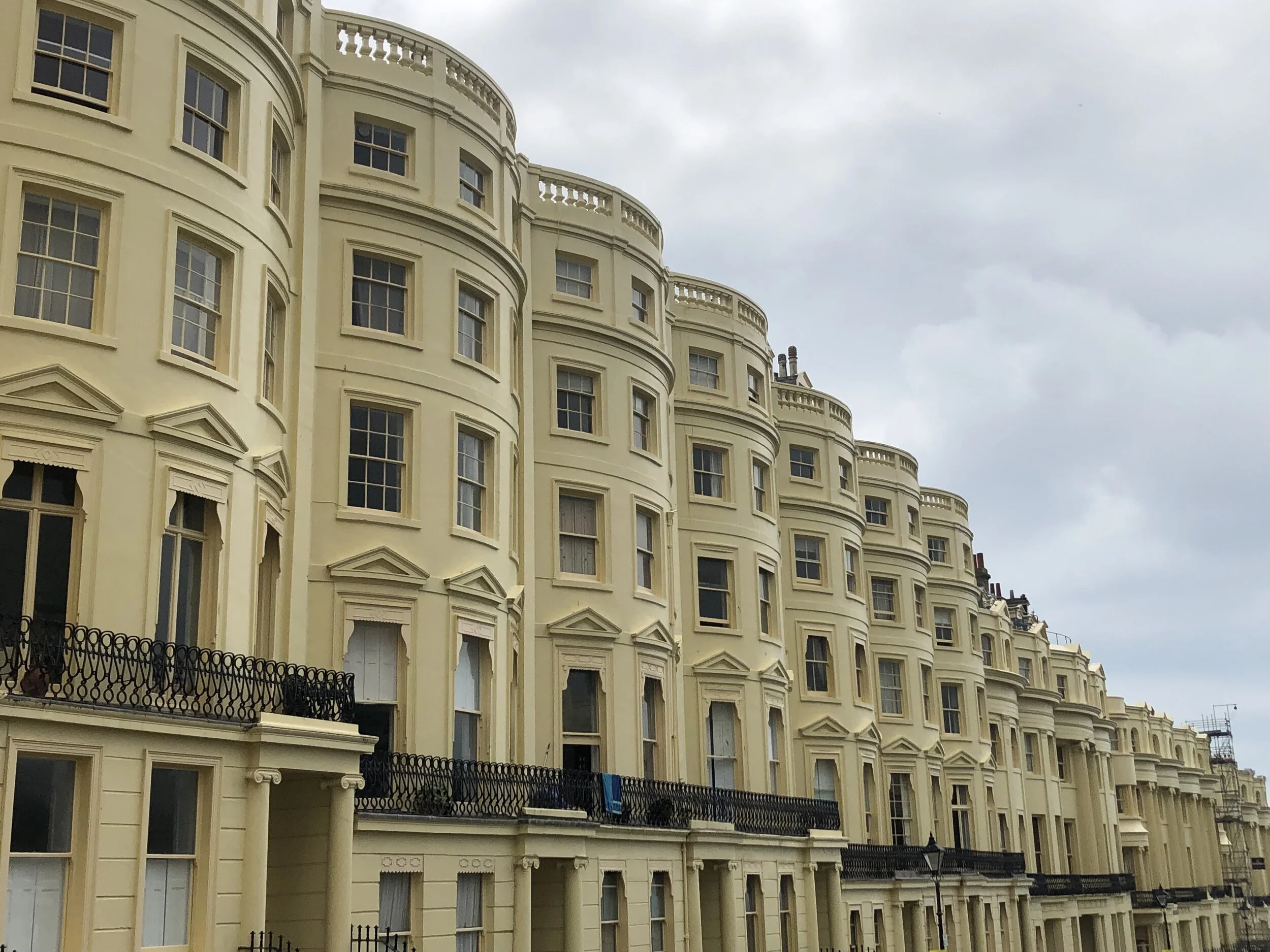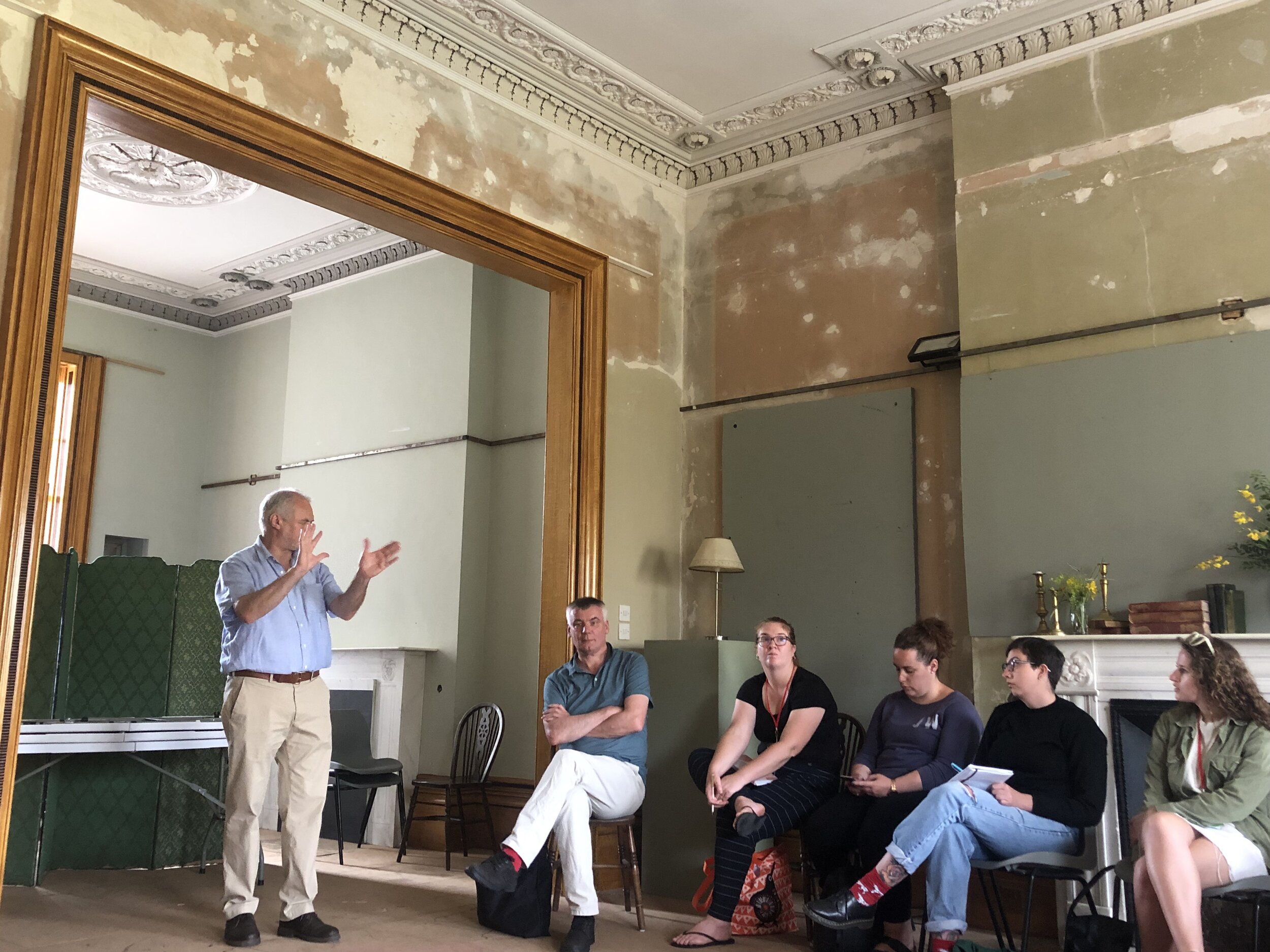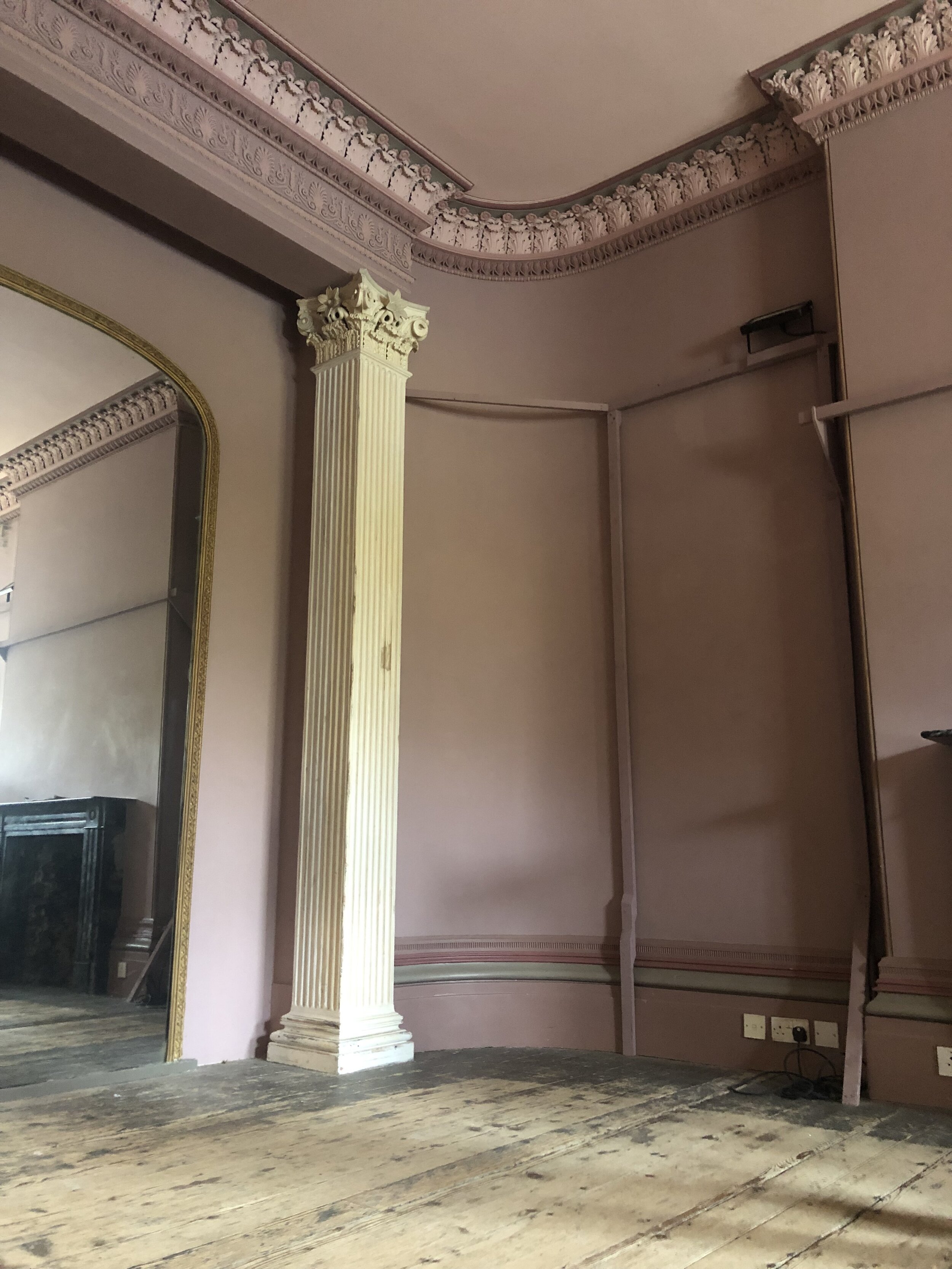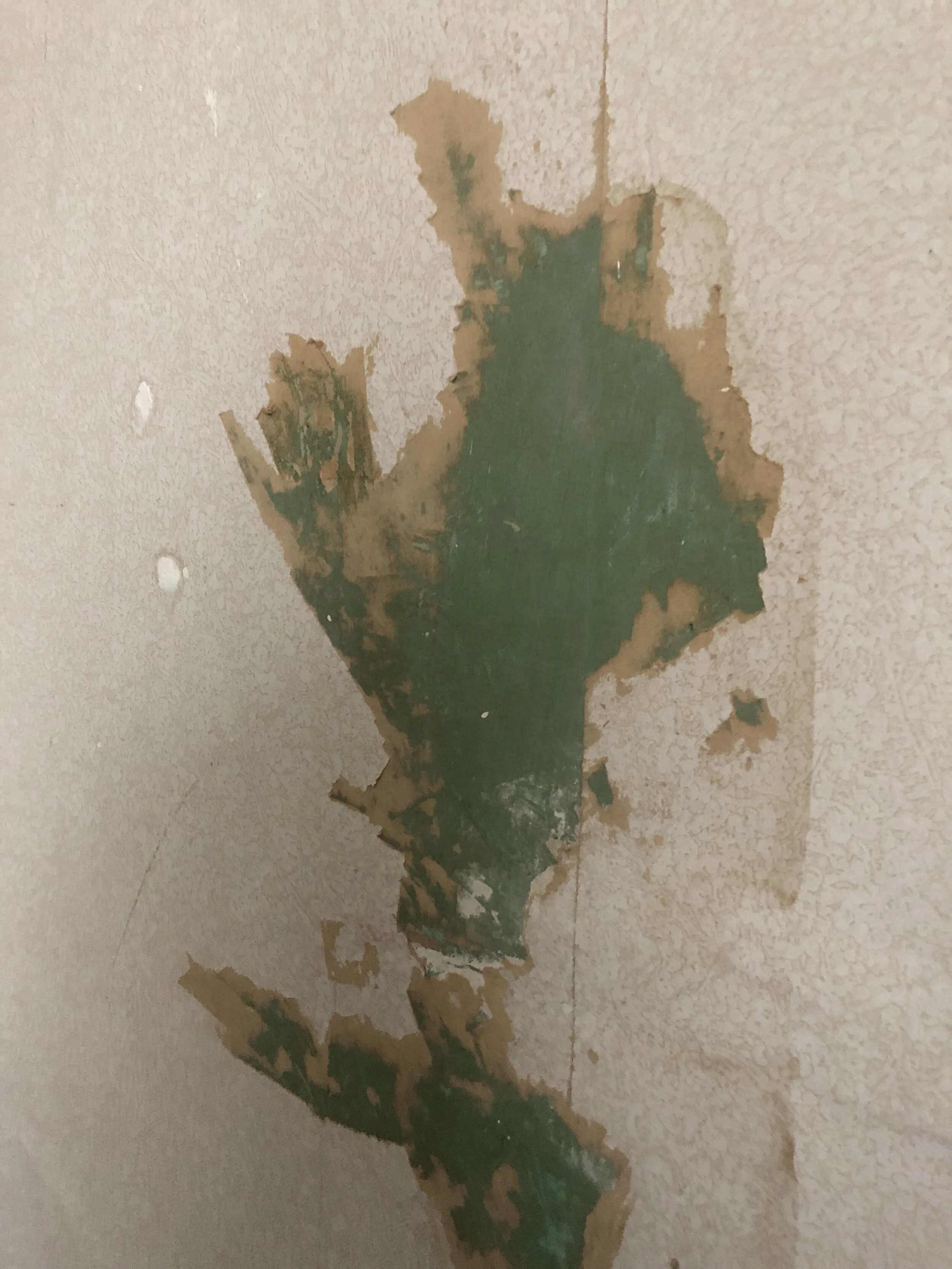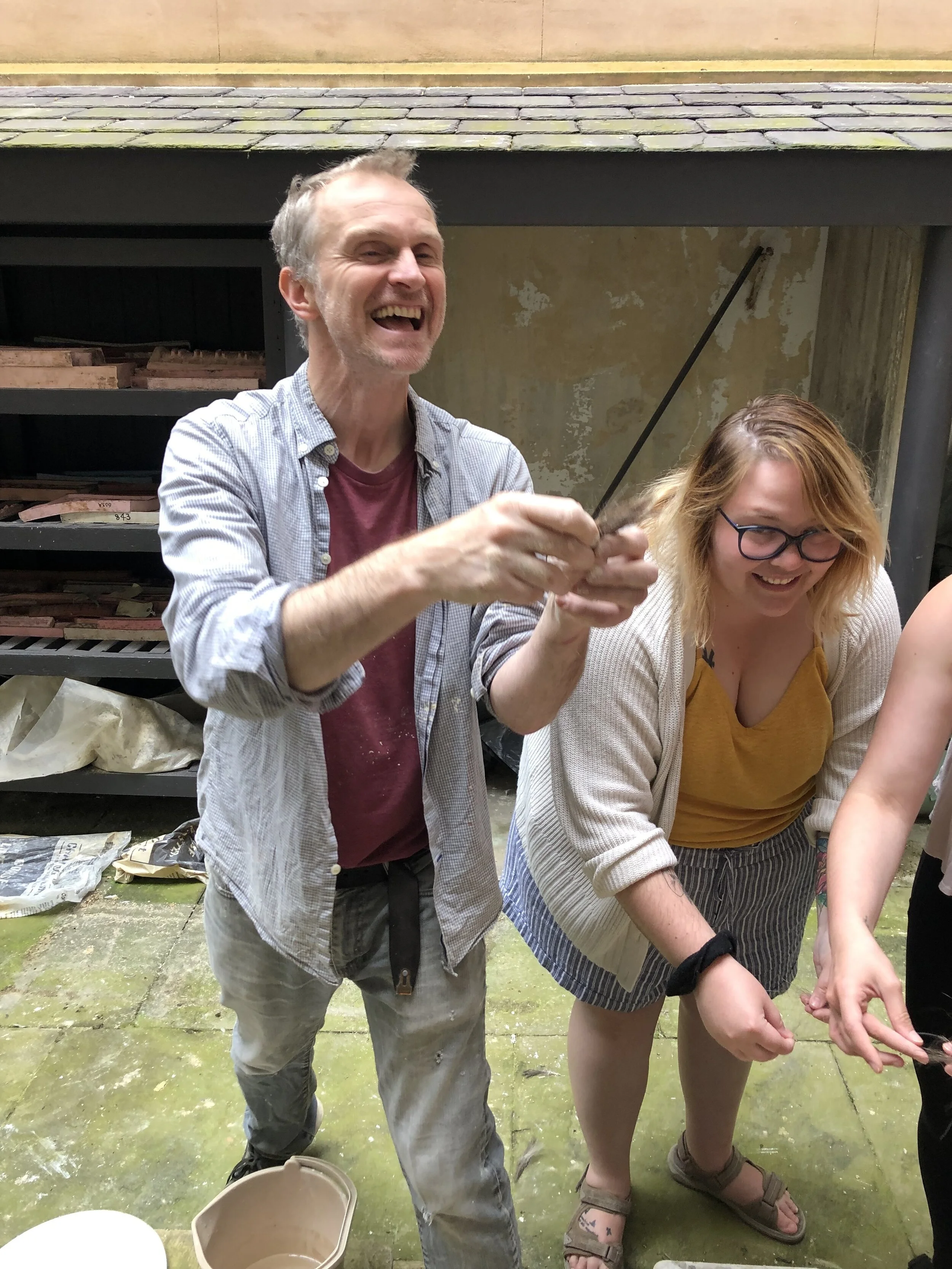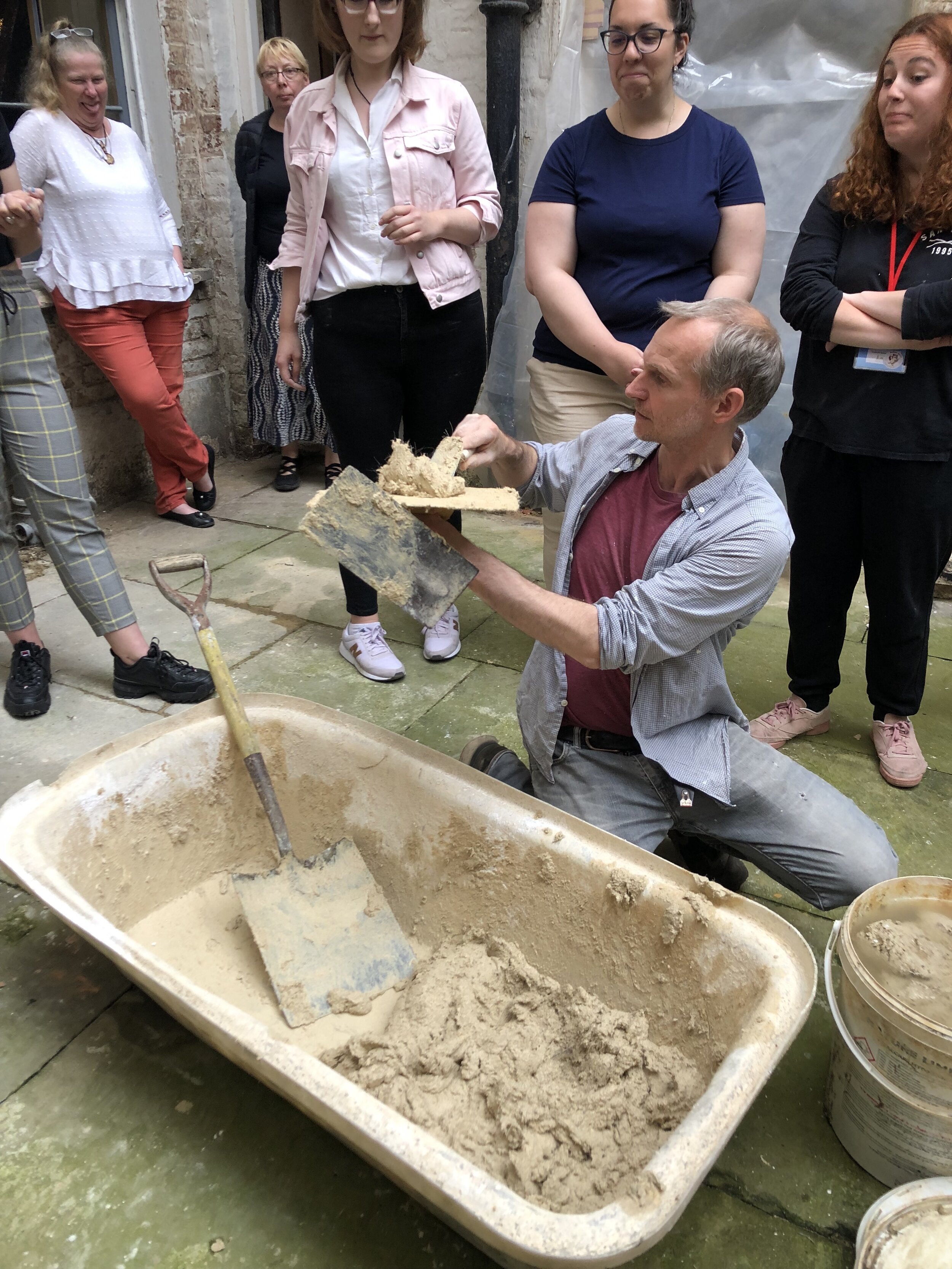OPP Day 7: Regency Townhouse
A delightful day learning about the Regency Townhouse. While we spent time in the kitchens the previous day, this day was all about learning about the restoration process.
Regency Townhouse is located in the greater Brighton area. It is one of the many luxurious townhouses that were built in Brighton during the Regency period, when the aristocracy would flock to the sea shores to partake in the fashionable “cure” of fresh, salty sea air and ocean water. The building where the Regency Townhouse is located is a prime example of the period’s architecture and the city’s past as a hot-spot for society’s elite. The Regency Townhouse has been reconstructed to reflect it’s past architecture as a grand townhouse, as over time it had been split into a number of smaller apartments. It’s quite a large project and definitely one of love. What I enjoyed most about the Regency Townhouse was the work-in-progress aspect of the experience. As a visitor, you get to see the progress of work being done in each room and get a real glimpse at the incredible delicate and often messy process of historic restoration. From seeing historic paint testing in process to reworking floorboards, you never know what project you’ll see being worked on at Regency Townhouse. I hope I have a chance to visit again soon to see how much has changed.
I might not have a future in historic wall plastering, but it was great to learn about!
We were given a practical course in restoration work. We learned so much about working with lyme for plastering walls and doing more intricate plaster work using gelatin molds to create the designs you see on ceilings, fireplace mantles, and other decorative interior spaces. We were also given the opportunity to give it a go ourselves. We mixed a lyme based paster to use as a scratch coat on a wall restoration project. We added the concentrated lyme mixture, sand, and yak’s hair to create a thick, gritty coat that would form a tight grip on the next layer of material added to the wall. We practiced applying our coat to a mock wall, then we were lead inside where we were all able to add our plaster to an interior wall that was being repaired. It was definitely difficult work, but I very much appreciated learning about the hard work that goes into restoring a historic property. So much of what visitors see, and even us museum professionals, is the finished product. We rarely get to see the messy, gritty, yak haired behind the scenes work that goes into fully restoring a historic property. I do think when you work at a historic property, you build a bond with the structure itself. It’s so important to understand as much of its history as possible, including how it’s been pieced together over its lifetime.
Regency Townhouse also invites volunteers to participate in the restoration process and assist with projects throughout the year. To give back to the community, Regency Townhouse hosts a special project where they offer practical training in painting, woodworking, and other skills. The time spent then translates to work experience that can then be used to help them find more permanent work.

